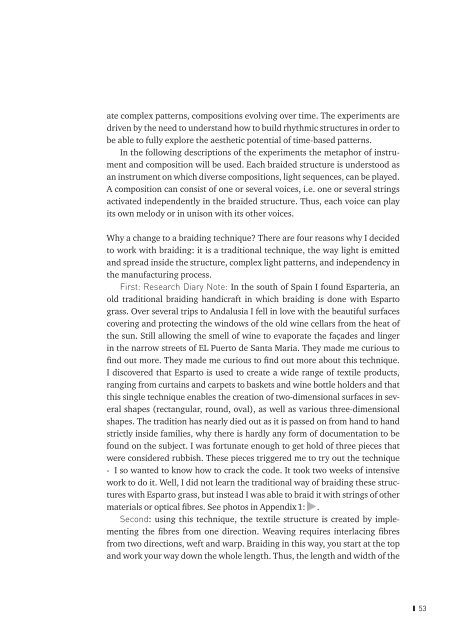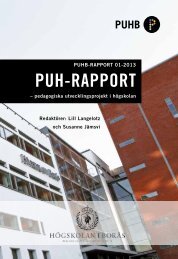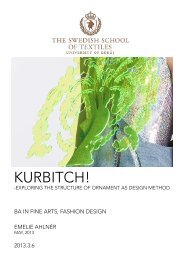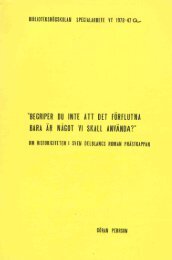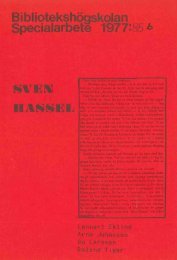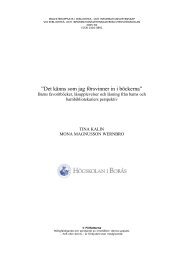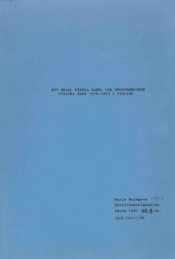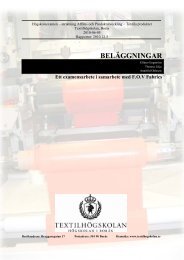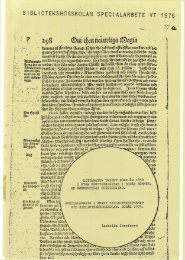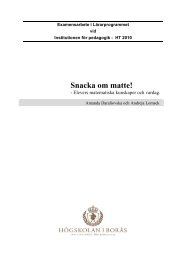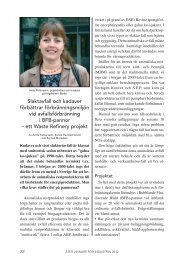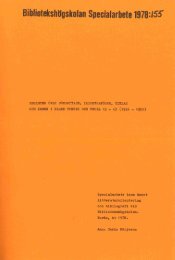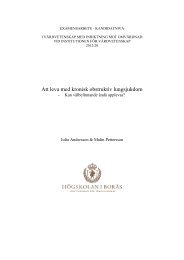barbara jansen - BADA
barbara jansen - BADA
barbara jansen - BADA
Create successful ePaper yourself
Turn your PDF publications into a flip-book with our unique Google optimized e-Paper software.
ate complex patterns, compositions evolving over time. The experiments are<br />
driven by the need to understand how to build rhythmic structures in order to<br />
be able to fully explore the aesthetic potential of time-based patterns.<br />
In the following descriptions of the experiments the metaphor of instrument<br />
and composition will be used. Each braided structure is understood as<br />
an instrument on which diverse compositions, light sequences, can be played.<br />
A composition can consist of one or several voices, i.e. one or several strings<br />
activated independently in the braided structure. Thus, each voice can play<br />
its own melody or in unison with its other voices.<br />
Why a change to a braiding technique? There are four reasons why I decided<br />
to work with braiding: it is a traditional technique, the way light is emitted<br />
and spread inside the structure, complex light patterns, and independency in<br />
the manufacturing process.<br />
First: Research Diary Note: In the south of Spain I found Esparteria, an<br />
old traditional braiding handicraft in which braiding is done with Esparto<br />
grass. Over several trips to Andalusia I fell in love with the beautiful surfaces<br />
covering and protecting the windows of the old wine cellars from the heat of<br />
the sun. Still allowing the smell of wine to evaporate the façades and linger<br />
in the narrow streets of EL Puerto de Santa Maria. They made me curious to<br />
find out more. They made me curious to find out more about this technique.<br />
I discovered that Esparto is used to create a wide range of textile products,<br />
ranging from curtains and carpets to baskets and wine bottle holders and that<br />
this single technique enables the creation of two-dimensional surfaces in several<br />
shapes (rectangular, round, oval), as well as various three-dimensional<br />
shapes. The tradition has nearly died out as it is passed on from hand to hand<br />
strictly inside families, why there is hardly any form of documentation to be<br />
found on the subject. I was fortunate enough to get hold of three pieces that<br />
were considered rubbish. These pieces triggered me to try out the technique<br />
- I so wanted to know how to crack the code. It took two weeks of intensive<br />
work to do it. Well, I did not learn the traditional way of braiding these structures<br />
with Esparto grass, but instead I was able to braid it with strings of other<br />
materials or optical fibres. See photos in Appendix 1: .<br />
Second: using this technique, the textile structure is created by implementing<br />
the fibres from one direction. Weaving requires interlacing fibres<br />
from two directions, weft and warp. Braiding in this way, you start at the top<br />
and work your way down the whole length. Thus, the length and width of the<br />
53


